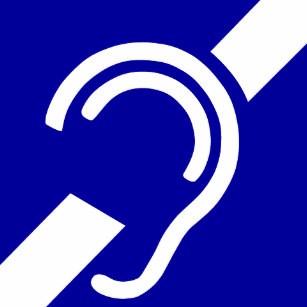What is Telecoil?
A Telecoil is an important component of some hearing aids. It is a small “antenna” made of magnetic coil of wire that is placed inside of the hearing aid; it works by picking up electromagnetic signals from a phone earpiece (or neckloop or hearing loop), which are then converted into sound that is streamed directly into the ear – thereby improving clarity and reducing background noise.
What is Telecoil Compatibility?
Hearing aids were created to work with hearing loops.
Some phones, mobile phones and tablets can transmit electromagnetic signals directly to the Telecoil of a hearing aid, cochlear implant processor or BAHA, allowing you to hear better by minimising the background noise around you. Those devices capable of directly transmitting signals to a Telecoil are called Telecoil Compatible.
Hearing Aid Compatibility (HAC) Rating
The HAC rating measures both telecoil and microphone capability of a phone.
Hearing Aid Compatible Ratings are designed to provide information on the level compatibility between a transmitting device (Phones, tablets, headsets, etc.) and standard hearing aids.
These ratings usually have two components, “M” for using the hearing aid on the microphone setting and “T” for using the hearing aid on the Telecoil setting. Both ratings range from 1 to 4.
In the case of the “M” rating, the higher the rating the more likely it is you will be able to use the phone with your hearing aid on the microphone setting with minimal interference from the phone’s electronics. A M3 rating indicates the handset has satisfied the ANSI standard. A M4 rating indicates the handset has exceeded the ANSI standard.
In the case of the “T” rating, the higher the rating the more likely it is you will be able to use the phone with your hearing aid on the Telecoil setting. Using your hearing aid set on Telecoil helps to improve clarity, reduce feedback and reduce background noise as the sound is transmitted as a magnetic signal directly to the Telecoil in your hearing aid. This option is generally clearer than using the hearing aid on Microphone setting. Only phones with a rating of T3 or T4 are listed as being Telecoil Compatible.
Why is a Telecoil important in my hearing aids?
When a phone handset, or mobile phone, is placed against the hearing aid, the speaker of the phone doesn’t line up with the microphone in the hearing aid. In addition, different processing algorithms of hearing aids usually means the sound from the phone is “tinny” or unclear. In addition, background noise also reduces clarity.
When using the telecoil, for optimum results, the hearing aid should be programmed so the microphone on the hearing aid is turned off when using the telecoil – this will provide the clearest possible signal from the phone, and allow you to adjust the volume on your hearing aid without picking up background noise.
What if I don’t think I have a Telecoil
Most hearing aids have a telecoil, but it needs to be turned on by your audiologist.
Check with your audiologist if you have a telecoil, and if so, make an appointment to have it turned on.
Which hearing aids have Telecoil?
In Australia, Telecoils have been fitted in most “Behind the Ear” (BTE) hearing aids for over 45 years. Many larger In-the-Ear (ITE) hearing aids are also fitted with a Telecoil.
Smaller hearing aids such as standard ITE, In-the-canal (ITC) and Completely in Canal (CIC) hearing aids are less likely to be fitted with a Telecoil feature, due to limited space within the hearing aid.
More Information:
What is a Hearing Loop?
The Telecoil device was initially created to work along with a hearing loop, which is a system that picks up sound trough a microphone to then convert it into an electromagnetic signal. This signal is then transmitted on a wire which is set up in the room in the form of a loop. The signal can be picked up by a hearing aid with a Telecoil and converted back to sound in the ears of the hearing aid user, making it possible for them to hear with clarity, even if they are not sitting close to the source of sound.
The diagram below explains the basic concept of a hearing loop system.

Figure 1 Main elements lay-out of Telecoil, Hearing Loop and Hearing Aid.
The advantage of the hearing loop is that it will only transmit the sound from the microphone(s), which means other sounds in the room such as chatter or background noises will not be transmitted to the hearing aid.
Hearing loops are widely available in cinemas, theatres, classrooms, convention centres and even in public transport like trains or buses. You can recognise if a room has a hearing loop by their standard sign, shown below.
Further information is available at https://www.hearconnect.com.au/hearing-augmentation-systems

Figure 2 International Symbol for Deafness (Access)
Hearing users must remember to set their hearing aid to Telecoil in order to connect to the hearing loop.
Note: You can still access a hearing loop system even if your hearing aid does not have a Telecoil in it. All you have to do is to borrow a hearing loop receiver with headphones, which may be available at places that are fitted with hearing loops, or can be purchased from https://www.hearconnect.com.au/hearing-augmentation-systems.
![]() INF001 - What is a Telecoil - 2019 09 18 1.docx
INF001 - What is a Telecoil - 2019 09 18 1.docx


